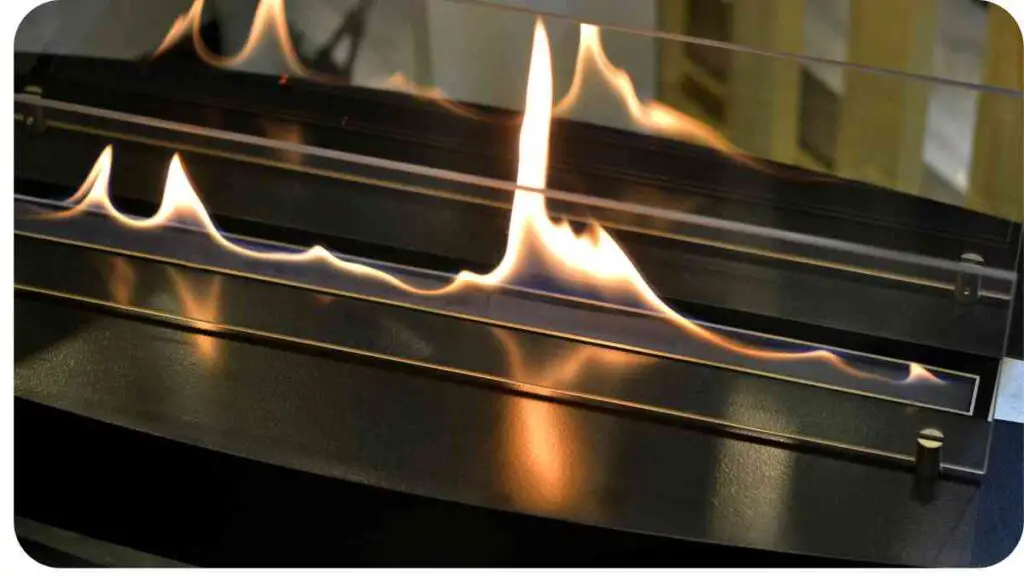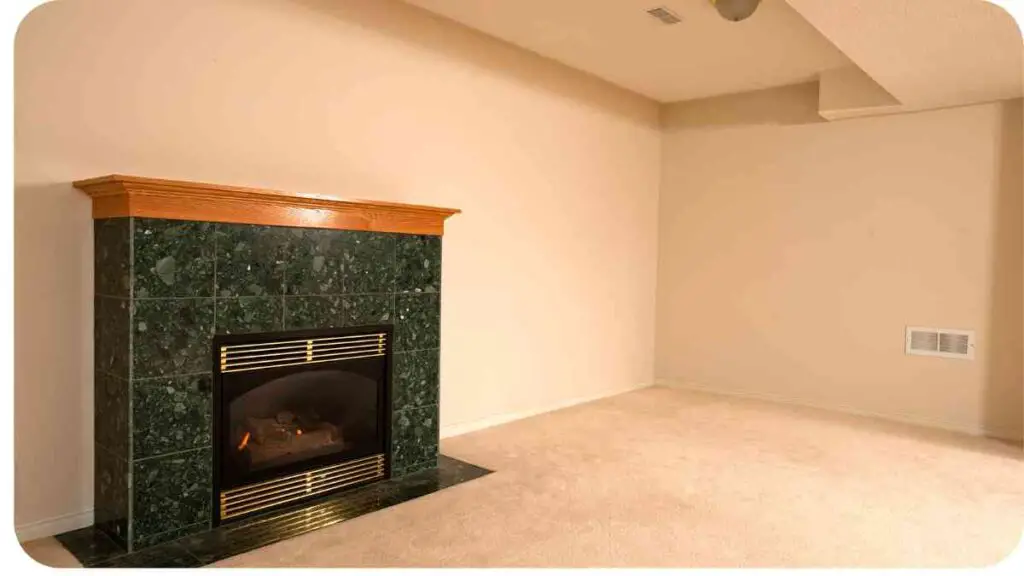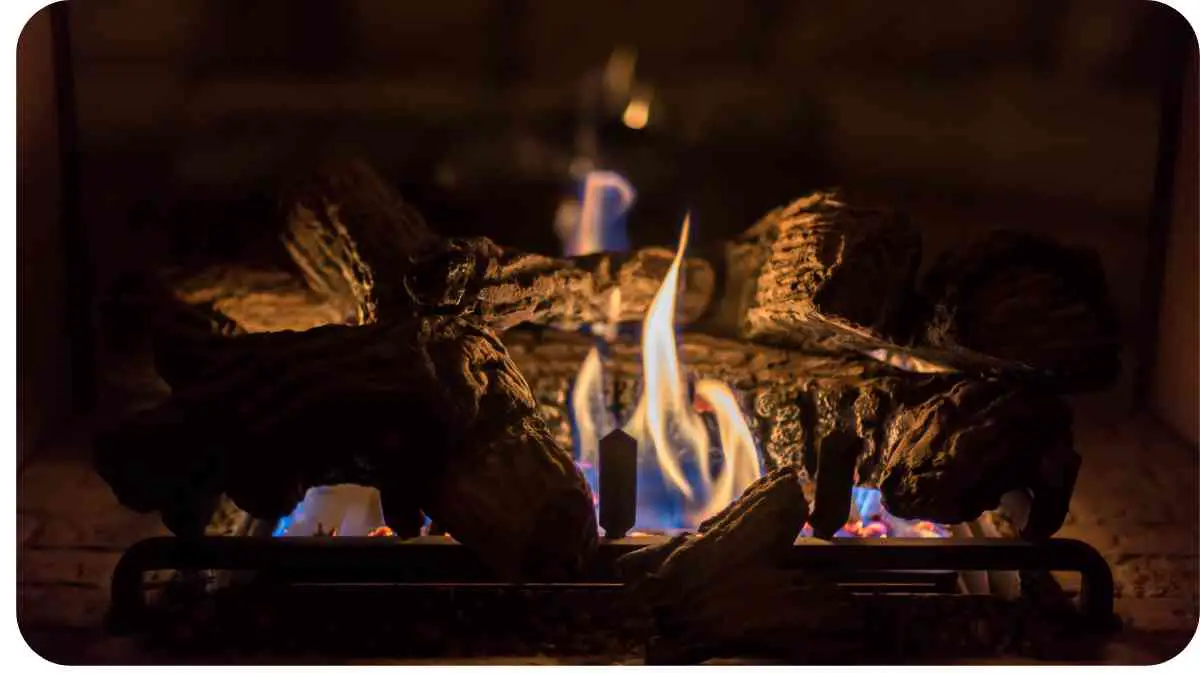Gas fireplaces offer comfort and warmth, but what do you do when the ignition system falters? In this comprehensive guide, we’ll walk you through troubleshooting common gas fireplace ignition issues step by step. Drawing from years of experience, we’ll ensure your fireplace is up and running safely and efficiently. Let’s dive in!
| Key Takeaways |
|---|
| 1. Troubleshooting gas fireplace ignition issues is feasible with the right knowledge and tools. |
| 2. Prioritize safety by following proper precautions and, in the case of gas leaks, contacting professionals immediately. |
| 3. Regular maintenance and preventive measures can minimize future ignition problems and ensure your fireplace’s longevity. |
| 4. Identify your fireplace’s ignition system to tailor your troubleshooting approach effectively. |
| 5. When in doubt or facing complex issues, consult qualified technicians for expert assistance and peace of mind. |
2. Understanding Gas Fireplace Ignition Systems
Before we delve into troubleshooting, let’s briefly understand the two primary types of gas fireplace ignition systems:
- Pilot Light: Traditional systems use a continuously burning pilot light to ignite the main burner.
- Electronic Ignition: Modern fireplaces often employ electronic ignition systems, which ignite the burner only when needed, conserving energy.
Understanding your fireplace’s ignition system is crucial for effective troubleshooting. Let’s gather the necessary tools next.
If you’re facing a gas fireplace odor issue, it’s crucial to address it promptly. Gas fireplace troubleshooting can help resolve this concern. Learn more about troubleshooting gas fireplace odors and keep your home smelling fresh
3. Tools You’ll Need
To troubleshoot your gas fireplace ignition issues effectively, you’ll need the following tools:
- Screwdrivers (Phillips and flat-head)
- Wrenches
- Multimeter
- Pipe wrench
- Wire brush
- Flashlight
- Safety goggles
- Gloves
4. Safety Precautions
Before you begin troubleshooting, safety should be your top priority. Follow these precautions:
- Turn Off Gas: Always turn off the gas supply to the fireplace before performing any maintenance or troubleshooting.
- Ventilation: Ensure proper ventilation in the room to prevent the buildup of gas.
- Wear Safety Gear: Don safety goggles and gloves to protect yourself from potential hazards.
- Follow Manufacturer’s Instructions: Consult your fireplace’s user manual for specific safety guidelines.
Now, let’s move on to the first troubleshooting step.
5. Troubleshooting Step 1: Checking the Gas Supply
Table 1: Common Gas Supply Issues
| Issue | Possible Cause | Solution |
| Weak Flame or No Flame | Low gas pressure or supply issues | Contact a qualified technician for inspection |
| Gas Odor | Gas leak | Immediately shut off gas supply and contact a professional |
Gas supply issues can range from low pressure to potentially dangerous gas leaks. If you encounter any gas-related problems, it’s crucial to address them promptly.
Strange noises from your fireplace can be unsettling. To ease your worries, understand the causes and solutions. Explore our guide on fireplace strange noises for valuable insights.
6. Troubleshooting Step 2: Inspecting the Pilot Light

Table 2: Troubleshooting Pilot Light Issues
| Issue | Possible Cause | Solution |
| Pilot Light Won’t Stay | Thermocouple or gas valve | Clean or replace thermocouple |
| Pilot Light Won’t Light | Gas flow or ignition | Check gas flow, clean ignition tip |
| Weak or Flickering Flame | Dirty pilot or gas supply | Clean pilot assembly, check supply |
CT: The pilot light is the ignition source for most gas fireplaces. If it’s not functioning correctly, your fireplace won’t work. Let’s move on to the next step to address this issue.
7. Troubleshooting Step 3: Cleaning the Thermocouple and Thermopile
Table 3: Maintenance Schedule for Thermocouple and Thermopile
| Maintenance Task | Frequency |
| Clean the thermocouple | Annually |
| Clean the thermopile | Annually |
| Inspect for wear and tear | Annually |
Regular maintenance of the thermocouple and thermopile is essential for reliable ignition. Let’s continue troubleshooting.
8. Troubleshooting Step 4: Examining the Ignition Switch
Table 4: Ignition Switch Troubleshooting
| Issue | Possible Cause | Solution |
| Ignition switch not responsive | Wiring or switch malfunction | Check wiring, replace switch |
| No sparking or clicking sound | Faulty ignition module | Replace ignition module |
| Sparking but no ignition | Ignition electrode or wiring | Clean or replace electrode |
The ignition switch is a critical component in electronic ignition systems. Issues with it can result in a non-functioning fireplace.
Even if you own an electric fireplace, heating issues can disrupt your comfort. Discover how to troubleshoot heating problems with your Dimplex electric fireplace. Read our guide on Dimplex electric fireplace heating issues for solutions.
9. Troubleshooting Step 5: Verifying the Gas Valve
Table 5: Gas Valve Troubleshooting
| Issue | Possible Cause | Solution |
| Valve won’t turn | Stuck or corroded | Apply lubricant or replace valve |
| Valve doesn’t open | Faulty solenoid | Replace solenoid |
| Valve doesn’t close | Electrical problem | Check wiring, replace if necessary |
The gas valve controls the flow of gas to the burner. Ensuring it functions correctly is crucial for safety and ignition.
10. Troubleshooting Step 6: Assessing the Wiring
Table 6: Common Wiring Problems
| Issue | Possible Cause | Solution |
| Loose or disconnected wires | Poor connections | Secure connections, replace damaged wires |
| Exposed or damaged wiring | Wear and tear | Replace damaged wiring |
| Wiring interference or short-circuits | Electrical issues | Inspect and repair electrical system |
CT: Wiring issues can cause a range of problems, from intermittent ignition to complete failure. Properly maintaining and troubleshooting the wiring is essential.
11. Troubleshooting Step 7: Reviewing the Control Board
Table 7: Control Board Troubleshooting
| Issue | Possible Cause | Solution |
| Control board not functioning | Electrical problems | Inspect, repair, or replace the board |
| Error codes or blinking lights | Diagnostic indicators | Refer to the manual for code explanations |
| Inconsistent performance | Component failure | Replace faulty components |
The control board plays a vital role in electronic ignition systems. Understanding and troubleshooting it is crucial for resolving ignition issues.
12. Troubleshooting Step 8: Inspecting the Gas Pressure Regulator
Table 8: Gas Pressure Regulator Troubleshooting
| Issue | Possible Cause | Solution |
| Inadequate gas pressure to the burner | Regulator malfunction | Replace the gas pressure regulator |
| Excessive gas pressure | Regulator malfunction | Replace the gas pressure regulator |
| Gas pressure fluctuations | Supply issues | Address supply problems |
The gas pressure regulator ensures that the right amount of gas flows to the burner. Problems with it can lead to poor ignition or safety concerns.
A pilot light outage can leave your gas fireplace non-operational. Fortunately, there are quick fixes to get it running again. Learn how to resolve fireplace pilot light outages and ensure cozy evenings
13. Troubleshooting Step 9: Checking for Obstructions in the Venting System

Table 9: Venting System Issues
| Issue | Possible Cause | Solution |
| Blocked or restricted vent | Debris or obstruction | Clear the vent, ensure proper airflow |
| Draft issues | Venting design | Consult a professional for adjustments |
A properly functioning venting system is essential for safe gas fireplace operation. Obstructions or draft problems can affect ignition and safety.
14. Troubleshooting Step 10: Evaluating the Fireplace’s Ignition Control Module
Table 10: Ignition Control Module Troubleshooting
| Issue | Possible Cause | Solution |
| Ignition module failure | Electronic component | Replace the ignition control module |
| Intermittent sparking | Wiring or connection | Check wiring, secure connections |
| No spark | Faulty spark generator | Replace the spark generator |
The ignition control module is the heart of the electronic ignition system. Proper diagnosis and maintenance are essential for reliable ignition.
15. Troubleshooting Step 11: Reviewing the Safety Sensor
Table 11: Safety Sensor Troubleshooting
| Issue | Possible Cause | Solution |
| Safety sensor alerts | Blocked sensor | Remove blockage or replace sensor |
| Safety sensor malfunction | Sensor or wiring issue | Inspect and repair as necessary |
Safety sensors are critical for ensuring the safe operation of your gas fireplace. Regular checks are essential.
16. Troubleshooting Step 12: Addressing Gas Odor Issues
Table 12: Gas Odor Troubleshooting
| Issue | Possible Cause | Solution |
| Gas odor | Gas leak | Immediately shut off gas supply, evacuate, and call professionals |
Gas odor is a serious issue that should never be ignored. Your immediate response can prevent accidents.
Curious about the cost of running an electric fireplace? Understanding energy consumption is essential. Dive into our article on electric fireplace energy consumption to make informed decisions and save on energy bills.
17. Troubleshooting Step 13: Common Issues and Solutions
Table 13: Quick Solutions Guide
| Issue | Possible Cause | Solution |
| Intermittent ignition | Multiple factors | Check gas supply, pilot, wiring, and ignition module |
| Pilot light keeps going out | Thermocouple or airflow | Replace thermocouple, ensure proper airflow |
| No ignition at all | Various issues | Follow troubleshooting steps and consult a professional if needed |
Sometimes, multiple issues can contribute to ignition problems. This quick guide provides an overview of possible solutions.
18. Preventive Maintenance Tips
To avoid future ignition issues, consider these preventive maintenance tips:
- Schedule annual professional inspections
- Keep the fireplace and venting system clean and free of debris
- Replace batteries in electronic ignition systems as needed
- Follow the manufacturer’s recommended maintenance schedule
19. Conclusion
Troubleshooting gas fireplace ignition issues might seem daunting, but with the right knowledge and tools, you can address most problems yourself. Regular maintenance and safety precautions are essential. Remember that when in doubt or dealing with gas leaks, it’s always best to call a qualified technician for assistance. Enjoy the warmth and comfort of your gas fireplace safely and efficiently!
Further Reading
- KC Sweep – Gas Fireplace Troubleshooting
- Explore comprehensive troubleshooting techniques for gas fireplaces, including tips on identifying common issues and DIY solutions.
- Fireplace Gear – How to Fix Delayed Ignition on Gas Fireplace
- Learn how to address delayed ignition problems in your gas fireplace, ensuring efficient and timely startup.
- Fireplace Experts – Tips for Repairing Gas Fireplace Ignition
- Discover expert advice on repairing gas fireplace ignition issues, with insights into maintaining a safe and functional fireplace.
FAQs
How can I identify the type of ignition system in my gas fireplace?
Gas fireplaces typically have either a pilot light or electronic ignition system. To determine which type you have, consult your fireplace’s user manual or visually inspect the ignition components.
What should I do if I smell gas coming from my fireplace?
If you detect a gas odor near your fireplace, immediately shut off the gas supply, evacuate the area, and contact a professional technician. Gas leaks are dangerous and should be addressed by experts.
Is it safe to attempt DIY troubleshooting for gas fireplace ignition issues?
DIY troubleshooting can be safe for minor issues like pilot light maintenance, but more complex problems should be handled by qualified professionals. Safety should always be a priority when dealing with gas appliances.
How often should I schedule professional maintenance for my gas fireplace?
It’s advisable to schedule an annual professional inspection and maintenance for your gas fireplace. This ensures safe and efficient operation while addressing potential issues proactively.
Are there any specific safety precautions I should follow when troubleshooting my gas fireplace?
Absolutely. Before troubleshooting, always turn off the gas supply, ensure proper ventilation, wear safety goggles and gloves, and follow the manufacturer’s safety guidelines outlined in your fireplace’s user manual.

My name is Hellen James. I’m an expert in writing about fireplaces, hearths, and firepits because they’re a beautiful part of home decor, but also because they can be so much more than just a fireplace—they’re a way to enjoy the outdoors even when it’s cold outside!


